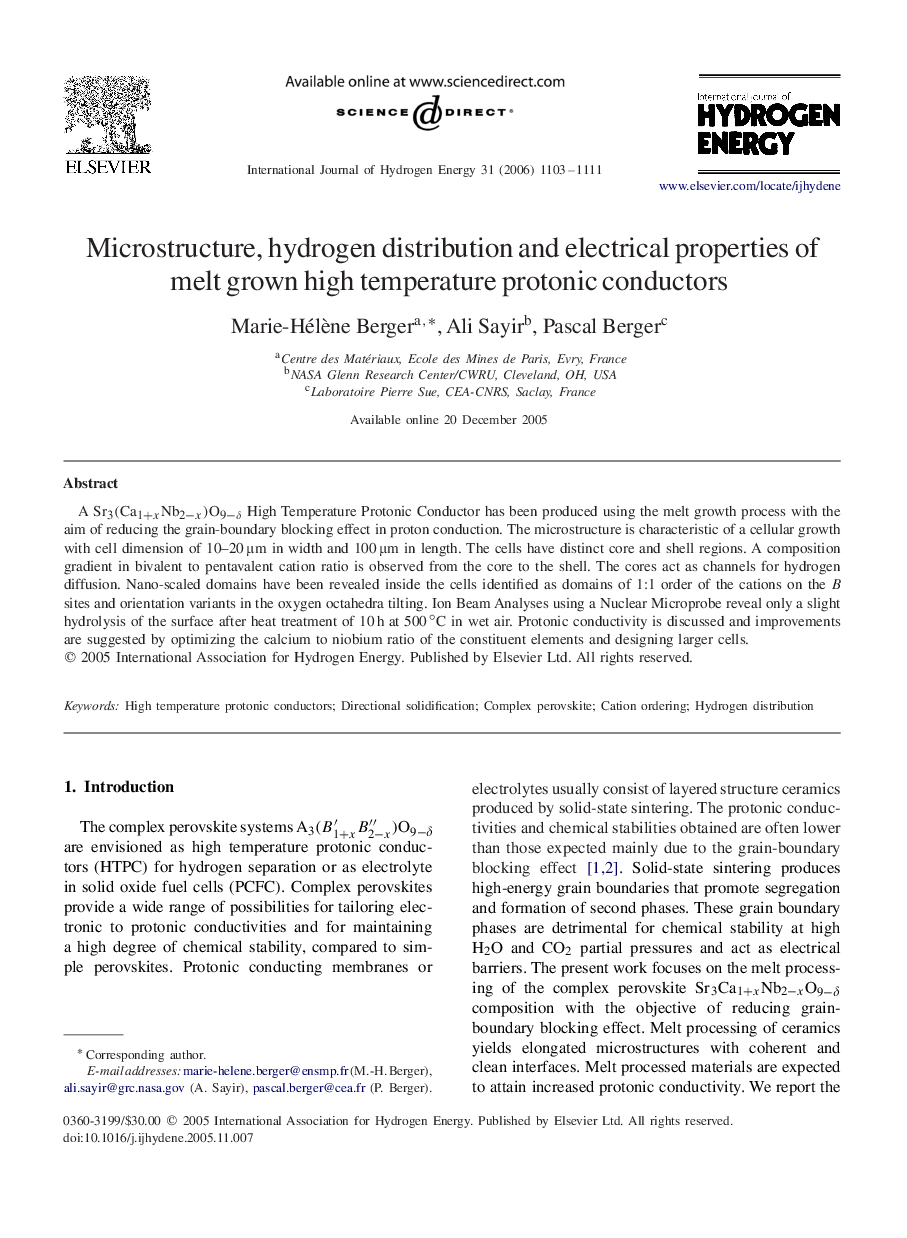| Article ID | Journal | Published Year | Pages | File Type |
|---|---|---|---|---|
| 1275414 | International Journal of Hydrogen Energy | 2006 | 9 Pages |
A Sr3(Ca1+xNb2-x)O9-δSr3(Ca1+xNb2-x)O9-δ High Temperature Protonic Conductor has been produced using the melt growth process with the aim of reducing the grain-boundary blocking effect in proton conduction. The microstructure is characteristic of a cellular growth with cell dimension of 10–20μm in width and 100μm in length. The cells have distinct core and shell regions. A composition gradient in bivalent to pentavalent cation ratio is observed from the core to the shell. The cores act as channels for hydrogen diffusion. Nano-scaled domains have been revealed inside the cells identified as domains of 1:1 order of the cations on the B sites and orientation variants in the oxygen octahedra tilting. Ion Beam Analyses using a Nuclear Microprobe reveal only a slight hydrolysis of the surface after heat treatment of 10 h at 500∘C in wet air. Protonic conductivity is discussed and improvements are suggested by optimizing the calcium to niobium ratio of the constituent elements and designing larger cells.
